Driving local demand to new heights!

CASE STUDYCould stainless have kept the war effort afloat?
SA stainless fights for its right to succeed

ISSUE 1: 2023
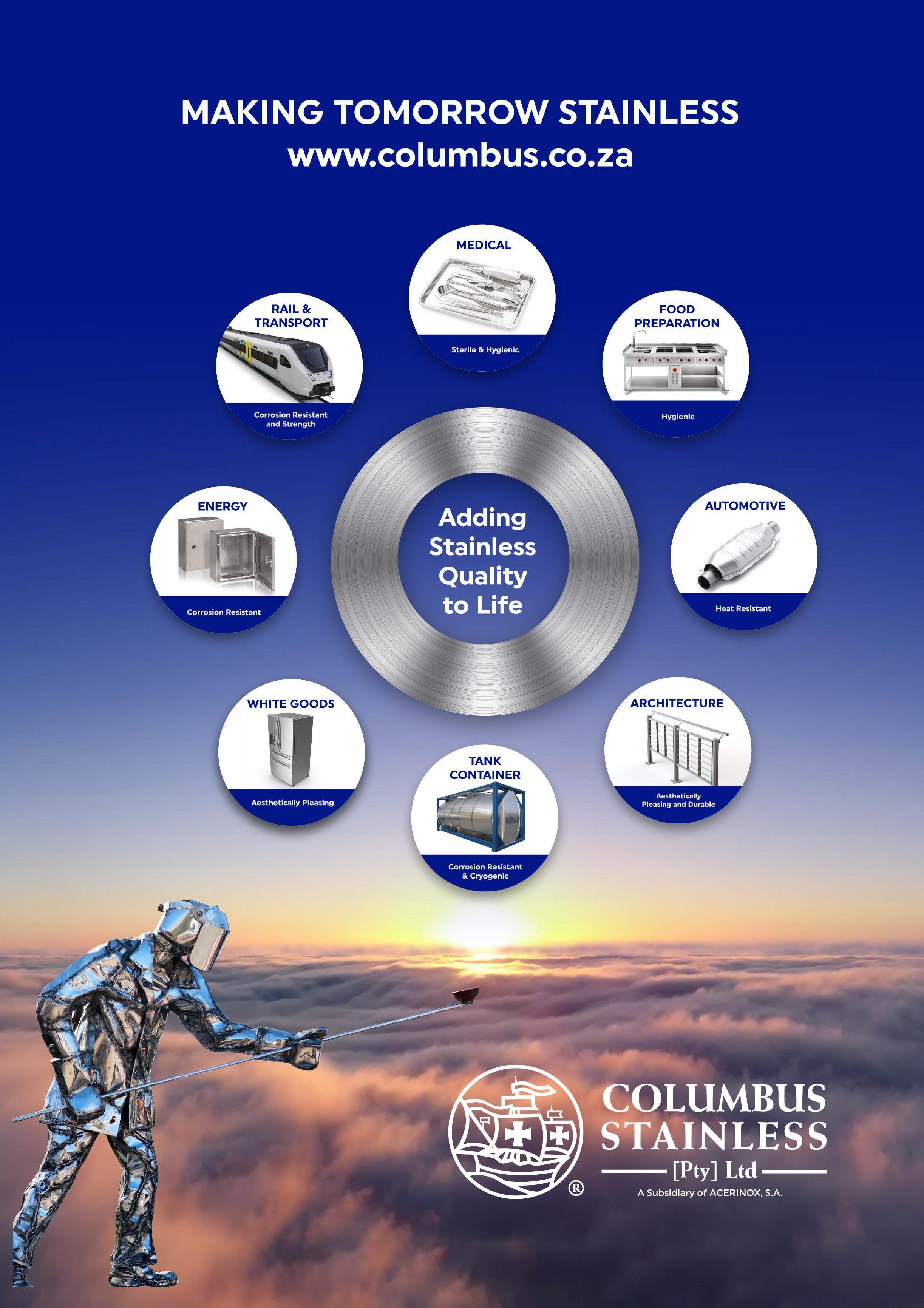
Headline Sponsor
Contents
Perspective
A fresh look at the South African stainless steel sector
Market Intelligence
GPS Roundup
State of the Stainless Steel Nation
SA stainless fights for its right to succeed
Webinar Report Back
Sassda questions why SA stainless steel is not the first choice for local projects?
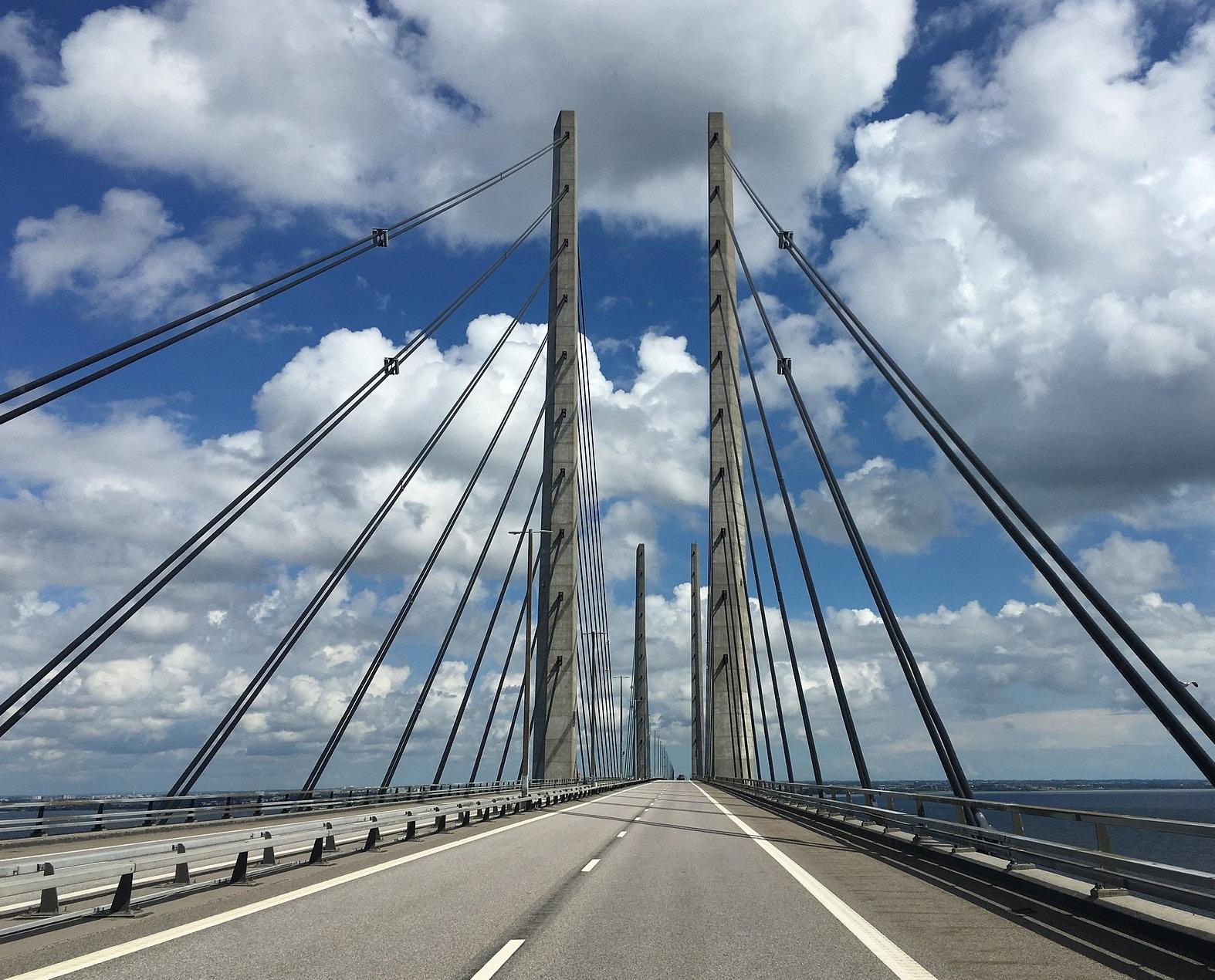

Demand
Case Study
Could stainless steel have saved the liberty ships during ww2?
Passionate Professional Profile
An usurpassed depth of experience & knowledge
Member News
Kelvion turns up the heat to produce a massive 316 column for SA’s petrochemical industry
Industry News
New association fills the toolmaking gap
Member Innovation
Saving as saves money in tough times
Sassda News
Eastern Cape Golf Day scores big! through consistancy
Sassda News

Columbus Stainless mill visits attract record numbers
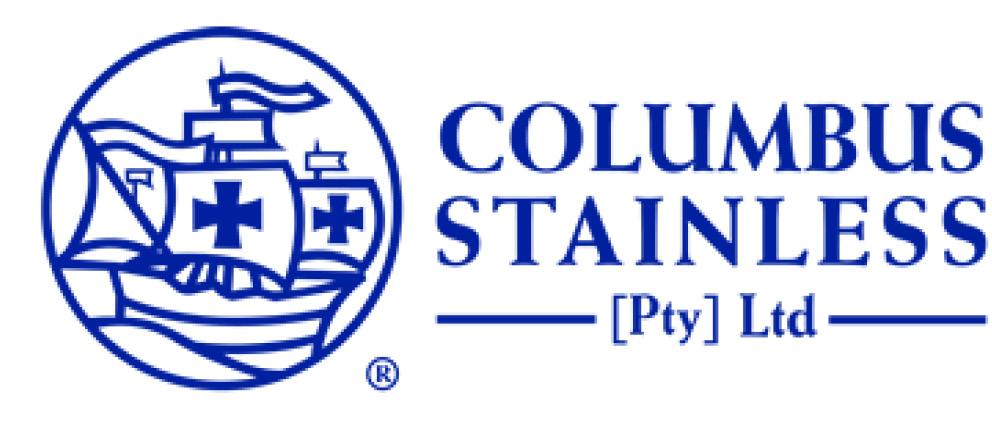
for SA stainless
3 5 9 11 15
Drivers A top line guide to booster sectors for stainless steel Market Intelligence Unlocking Uganda’s potential
steel 1
Adverts
Stainless
NDE • PFERD-South Africa
Fastenright 19
25 26 27 28 23
•Columbus
•
•
21
Contact us
TELEPHONE NUMBER 011 883 0119
EMAIL info@sassda.co.za
WEBSITE www.sassda.co.za
Sassda
MICHEL BASSON Executive Director michel@sassda.co.za
FRANCIS LE ROUX Head of Administration francis@sassda.co.za
MANKABE MORE Education and Training & Marketing mankabe@sassda.co.za
LESLEY SQUIRES Market Intelligence and Exports lesley@sassda.co.za
KIM STEVENS Events, Email Marketing and Website kstevens@sassda.co.za
JOSE HERON Accounts jose@sassda.co.za

LUISE ALLEMANN Content, Social Media and PR luise@mediaink.co.za
Stainless steel is published quarterly and is distributed to stockists, distributors, fabricators, specifiers, consulting engineers, architects, mining, petrochemical and chemical industries, food and beverage and pharmaceutical industries, consumer outlets, end-users, educational institutes, and provincial and government departments. Sassda makes every effort to ensure the accuracy of the contents of its publications, but no warranty is made as to such accuracy and no responsibility will be borne by the publisher or Sassda for the consequences of any actions based on information so published. All opinions, views and expressions contained in this publication are not necessarily those of the management of Sassda. The contents of this publication enjoy positive protection under the Copyright Act and therefore copyright thereof is expressly reserved. Any copying, publication and distribution of part or whole of the publication is prohibited unless consent is granted by Sassda.
A fresh look at the South African Stainless Steel sector

After a bumpy ride in recent years, we have started the new year with high hopes and a positive attitude. Welcome to our first Stainless Steel magazine issue for 2023 and we trust it will be the excellent read you have become accustomed to!
You will notice that this issue of the magazine sports a new design that will increase its online readability without doing away with the well-known “look and feel” of the publication.
In this issue, we will be giving you some information on the global state of the stainless steel industry whilst bringing it closer to home where we see the decline in apparent consumption of stainless steel to continue after a very positive growth spurt in 2021.
1 Issue 1 – 2023
perspective
Export pressures
The decline is mainly attributed to lower exports of certain products, and we hope this situation is rectified during the year to come. Be this as it may, the local demand for fabricated products remains good, and there is a lot to be done to localise certain stainless steel import categories.

Admittedly, our members’ medium-term confidence levels have dropped below 50%, mainly as a result of the uncertainty and erratic nature of the electricity supply. Our industry is resilient and resourceful but added cost to keep plants running means drastic challenges in competitiveness and keeping to delivery schedules.
From Sassda’s side, we will continue to lobby on behalf of members for relief and assistance during these difficult times as we did ensure the industry opened to 50% following the hard lockdown in 2020 and getting stainless steel removed from the recent legislation on banning the export of scrap metal.

In addition, our traditional accredited training programs are in place and enhanced, and the industry can once again look forward to value adding in our “60 Minutes in Stainless Steel” Wednesday webinars.

Top quality content
Looking at the specific content in this issue, our Uganda feature indicates our readiness to return to Africa to keep members up to date with market intelligence from our neighbours on the continent. The magazine also contains some sound technical information as we look to expand our technical services to members this year.
On a personal note, the ‘Passionate Professional’ profile is a highlight of this issue as we feature a conversation with
a stalwart of the industry who has been an integral part of the Sassda team for more than 22 years. Lesley Squires has driven our market research and lobbying with government for many years, and we refer to her as a walking industry encyclopaedia! She is a true stainless legend and will be moving on from Sassda during the middle of the year. Her loyalty and energy for our industry are unsurpassed and her presence will remain for many years to come.
Happy reading!
Michel Basson Sassda Executive Director
Issue 1 – 2023 2 perspective
market intelligence
The best of the GPS e-newsletter
Each month Sassda rounds up a selection of global and local market intelligence articles that are sent to our members in an easy-to-read package of content. They’re designed to highlight pockets of potential growth of stainless steel. Here are some of the best articles from the last few issues...
Improved infrastructure can help SA escape low growth

Infrastructure challenges in South Africa are mounting in what is turning out to be a perfect storm of power cuts, water shortages, and potholes that are all too common.

The South African Institution of Civil Engineering (SAICE) highlighted these challenges in its 2022 state of infrastructure report that revealed that South Africa is at risk of becoming a “failed state”.
The report assessed 32 different infrastructure segments and found only 15 to be “satisfactory” or above (graded C or above), with the remaining segments falling into being at risk of failing’ (D) or ‘unfit for purpose’ (E).
Government to spend R903-Billion on infrastructure development over next 3 years
Delivering the 2023 Budget Speech earlier this year Finance Minister Enoch Godongwana said government spending on infrastructure is expected to reach R903-Billion over the next three years with stateowned companies contributing the lion’s share to this investment. He reported that the largest portion of this, around R448-Billion, will be spent by state-owned companies, public entities, and public-private partnerships. All of which presents an excellent opportunity for the use of local stainless steel. Read more
South Africa’s overall infrastructure rating was a D, indicating that infrastructure is not coping with normal demand and is poorly maintained...Read more

WBHO hopes to return to Total’s Mozambique project before June
JSE-listed construction and engineering group WBHO is hopeful of a potential return to work in Mozambique, where it has a major contract for a camp facility at TotalEnergies’ liquefied natural gas (LNG) project and several Sasol contracts. The TotalEnergies gas infrastructure project in Mozambique was suspended in 2021 following insurgent attacks in the Cabo Delgado province, where it is situated. Presenting WBHO’s interim results on Wednesday, Group CEO Wolfgang Neff said positive signs are emerging that activity on the project may resume later in 2023. Read more

3 Issue 1 – 2023
Massive win for new gas project in SA

NaturalgasproducerRenergenhasannouncedthatithas produceditsfirstamountofliquidheliumatitsVirginiaGas Project
basedinSouthAfrica.
TheVirginiaGasProject,ownedandoperatedbyRenergen’s subsidiaryTetra4,isSouthAfrica’sonlyonshorepetroleum plant.
ItcoversanareathatincludesWelkom,Virginia,and Theunissen.Renergenestimatesthattheheliumreserveat thesitecouldbeaslargeas9.74billioncubicmeters,making itlargerthantheknownreservesoftheentireUnitedStates.
AccordingtoTransparencyMarketResearch,an internationalmarketanalysisfirm,thebulkliquidhelium industryisexpectedtobeworth$2.7-Billion…Read more

Canyon Coal to develop new R1.4-Billion mine in Mpumalanga
Canyon Coal is constructing a new coal mine in Hendrina, Mpumalanga. Production is expected to start in the second half of 2023, with the first phase of the Gugulethu project on track to be completed in eight to ten months and expected to produce 1.2 million tons a year. Formerly known as De Wittekrans, Gugulethu is a greenfield project located southeast of Hendrina that Canyon bought out of business rescue. Phase 1 of the project holds an economically mineable reserve of 14.3 million tons of run-of-mine (RoM) coal. It comprises three pits, one of which has been specifically designed to gain access to the underground reserve as part of Phase 2… Read more

SA Breweries invests R825-Million into expansion of Prospecton Brewery
Kwazulu-Natal (KZN) Premier Dube-Ncube has presided over South African Brewery’s multi-million expansion project. The visit aims to unpack SAB’s R825-Million investment into KZN, as pledged at the South African Investment Conference.

In a multi-million rand investment that will create more than 25 000 job opportunities, SAB is set to expand its operations after setbacks, including the COVID-19 pandemic and the devastating floods in April and May 2022.
Dube-Ncube described SAB’s investment into its Durban-based, Prospecton Brewery as an overwhelming vote of confidence in the future of the province Read more
Issue 1 – 2023 4 market
intelligence
state of the stainless steel nation
SA stainless fights for its right to succeed
Sassda Executive Director Michel Basson outlines his ‘view from the top’ on key local sector topics such as the effect of global market constraints on local exports and the unprecedented power crisis. But… he also points out that despite these obvious challenges the industry remains ready to fight for its well-deserved place in growing the South African economy.
1. How would you categorise the performance of the South African stainless steel sector in the last three years - since the onset of the COVID-19 pandemic in March 2020? What is the state of the market at present?
The South African stainless steel industry is regarded as a world class supplier of stainless steel material and fabricated products but has felt the impact of the COVID-19 pandemic since 2020. Bearing in mind that the local stainless steel industry operates in a weakened economy with little GDP growth, the South African


stainless steel sector showed remarkable resilience in recovering from the restrictions brought on by the pandemic.
The sector is also well organised and well represented at government level. As such, the industry was allowed to re-open, after the hard lockdown restrictions in 2020, to a 50% level compared to the 30% for the majority of the general steel industry. This assisted the local producer and fabricators to keep the supply chain unbroken to a large extent.
Except for local industry constraints during the pandemic and the slow growth of the national economy, factors outside South Africa’s borders have also affected the apparent consumption statistics. The continuing conflict in Eastern Europe also impacts
5 Issue 1 – 2023
of the stainless steel nation
the export potential for the local industry with considerable effect on the local producer of stainless steel products.

2 . Please can you give some other meaningful stats relating to how the industry has performed over the last 12 months?
In the graph above it is evident that the pandemic has impacted the local industry since 2020.
Note that apparent consumption was already declining before 2019 due to the weak local economy and that 2020 was merely a continuation of this movement. During 2021, this trend was reversed with improvements in local production and exports. There was also robust local demand leading to increased imports of flat products in 2021.

The statistics for 2021 were strong enough to cause a gradient switch in the trendline, however, the final results for 2022 were disappointing. The trend line switched back to a negative with both local production and exports shrinking. During the 2022 period, the exports of flat products declined to the lowest levels since this measurement was initiated in 2012. This decline in exports is mainly due to restrictions on the volumes for export to Europe that were initiated after the Russian invasion of Ukraine.
3 What are the key global and local sectors that have the greatest potential to drive demand for South African stainless steel and what role does the renewed interest in the concept of localisation by government have to play in this regard?

Issue 1 – 2023 6
state
state of the stainless steel nation
As mentioned earlier, the retraction in apparent local consumption is mainly due to lower production and exports. This will only be rectified when the conflict in Europe ends or is at least curbed to a level where the European Union removes the restriction on stainless steel exports to its member countries.
African markets would not offer a solution to the increased exports of flat material or at least not as a replacement for the restricted European markets. However, African markets do offer an unrivalled opportunity for locally fabricated products in stainless steel. This includes industrial capital equipment for mining, agriculture, food processing, and the health sectors.
The return to Africa during 2023 will be a focussed approach by various entities involved in the South African steel industry including government. This resides within the structures of the Steel Master Plan and will take the form of an ‘SA Inc.’ type approach to advance the interests of the local steel industry and national economic interest.

Localisation will remain key in this effort. Localisation in simplistic terms refers to the local manufacture of goods that are
currently being imported, with the view to not only meet national demand but to be competitive enough to service African markets as exports. This process has kicked off with excellent potential for success.
4 What are the biggest challenges facing the local stainless steel sector in the next 12 months, both global and local?
Although the local industry showed its resilience during the pandemic, it is now faced with new challenges in the form of an erratic energy supply. The effect of the more than 200 days of limited electricity supply is part and parcel of the visible decline in apparent consumption during 2022. The predicted growth of less than 1% in the GDP will also have an effect, especially on our smaller members and the local industry will still be subjected to the volatility in the international economy, especially the European economic situation.
5 How has Sassda evolved during the last three years against the backdrop of unprecedented challenges that have faced, and continue to face, its members?

7 Issue 1 – 2023
The effect of the more than 200 days of limited electricity supply is part and parcel of the visible decline in apparent consumption during 2022
state of the stainless steel nation
Sassda had no choice but to adapt. As the official voice of the industry, Sassda is sensitive to the environment that faces its members as well as that of the general industry. As mentioned, the local stainless steel has proven itself to be resilient to many challenges. It has adapted through spiking nickel prices, previous periods of loadshedding and many financial crises.
Part of this adaption process was to become more diverse in capacity and products, be more resource efficient and to be innovative. All the lessons learnt are now paying dividends. Our members remain world class organisations and it is Sassda’s responsibility to ease the road ahead as far as possible.
We are doing this by ensuring our industry is well trained through our educational products; by continuing lobbying and cooperation with government to the advantage of the industry (for example, Sassda influenced the dtic so that stainless steel is now excluded from the recently announced scrap export regulations); as well as to identify potential markets and assist members to access them.

6 What are some of the key projects/initiatives/ programmes that Sassda will be championing in 2023?
Sassda believes that continuing our current strategy of educating, promoting and lobbying will remain key to growing the local stainless steel industry. By growing the volumes of the apparent consumption statistics and focussing on localisation, Sassda will contribute to value addition and job creation – both of which are of critical importance for growing the national economy and alleviating the socio-economic reality of our people.

Issue 1 – 2023 8
The local stainless steel has proven itself to be resilient to many challenges. It has adapted through spiking nickel prices, previous periods of loadshedding and many financial crises
SASSDA questions why SA Stainless Steel isn’t first choice for local projects

Creating increased demand for South African stainless steel within key sectors such as mining, automotive, and food and beverage is a key area of focus for the Southern Africa Stainless Steel Development Association (Sassda) in 2023. This was the view of Sassda Executive Director Michel Basson in a recent webinar on the ‘State of the Stainless Steel Nation’ where he provided a comprehensive local and global overview of the sector.
Basson stated; “The local industry is well-positioned to supply African markets with a variety of world-class stainless steel products that can rival other global competitors. This presents significant opportunities for local fabricated products including industrial capital equipment for mining, agricultural applications, food processing, and health applications.”
Sassda has therefore put measures in place to strengthen the industry, provide access to new opportunities and capacity in other sectors, and stimulate local demand.
Basson elaborated, “Local demand can also be stimulated through the designation of local products in infrastructures at all government levels. We see many projects where there’s a definite contract requirement for 100% local supply; these companies require exemption from the dtic.”
Punting the use of local stainless steel
In pursuit of its mandate, Sassda is also exploring opportunities to replace numerous applications where galvanized metals are currently being utilised with 3CR12, the world’s most specified 12% chromium utility stainless steel. Sassda has various partnerships in place to facilitate localisation in industries such as food and beverage, medical, automotive, cutlery, travel, and containers in multiple countries, providing a range of opportunities for the local stainless steel market.
Sassda has also been assisting with evaluating various government-funded projects and has seen definitive growth in municipal undertakings in certain provinces. “Unfortunately, we are currently constrained by a number of

9 Issue 1 – 2023
webinar report back
restrictions; however, we are working on these together with our private partners via the Steel Master Plan.”
This type of engagement with government forms part of Sassda’s broader mandate of engaging in key lobbying efforts for its members. For example, Sassda was able to lobby the dtic to exclude stainless steel from the recently announced ban on scrap export regulations.
A global view
Basson also provided a broader view of the current state of the stainless steel sector globally and locally. He reported that despite various global issues over the past few decades, stainless steel has maintained a steady annual compound global growth rate of 5.8%, which is more than double the growth rate of copper, and 30% more than aluminium. He also highlighted the fact that between 2005 and 2021, China experienced rapid growth in stainless steel production, while South Africa remained stable at approximately 13% of global production.
Basson stated; “Locally, the COVID-19 pandemic significantly impacted the industry over the past three years, resulting in a negative trend in local production and export shrinkage in 2022. Nevertheless, the South African stainless steel industry is still regarded as a world-class supplier. The sector displayed remarkable resilience in bouncing back from the pandemic-induced restrictions.”
The power crunch
Locally, stainless steel production and fabrication are currently facing their biggest hurdle to date: loadshedding. This challenge overrides all previous issues, as the total loadshedding hours have already exceeded those of 2021 and 2018-2019 combined. The effects of loadshedding include diminishing staff safety, motivation, productivity,
webinar report back
and increased living costs, contributing to a visible decline in apparent consumption during 2022. The South African Reserve Bank has identified this as a huge future risk that could result in social unrest, straining socio-economic stability.
“But we need to be optimistic about the future, and this is possibly the time to rethink what we do and how we do it. The energy issue might be an opportunity to make the industry more energy efficient and less energy dependent,” says Basson.

Enhanced access
Against the backdrop of these challenges, Sassda’s focus has been on adapting its processes by providing enhanced tools to facilitate easier access to its members’ stainless steel products, together with the expansion of the association’s education and training programmes. This training includes several CPD accredited presentations that can also be customised.
Sassda also offers a broad range of tools for every level; those relevant to government, partners, the broader industry, and even to non-technical consumers. These tools provide technical advice and guidance.
Basson concluded; “Despite challenges facing the industry, Sassda is optimistic about the future of the South African stainless steel sector, and based this optimism on our industry’s cohesive ‘strength in numbers’. With these collaborative efforts and the resilient nature of our industry, we remain a strong global competitor in 2023.”
Email michel@sassda.co.za to find out more.

Issue 1 – 2023 10
fullWatchthe
herewebinar
demand drivers
A top line guide to booster sectors for stainless steel
Sassda is cooperating with a variety of industry partners within the framework of the Steel Master Plan to increase local production capacity to capture more of the local market through localisation. The association believes that building a strong local production capacity based on local demand, can be the catalyst for increasing the export market with a special focus on Africa.
In pursuit of this, Sassda has identified a number of key local industry sectors that it considers demand drivers for local industry...
1.Demand Sector: Hollowware
Sassda has monitored the local hollowware and kitchenware sectors since 1999. As a labour-intensive area of manufacturing, jobs per ton, it is estimated that each ton of hollowware produced represents about five jobs. Current statistics indicate an average annual import tonnage of around 10 000 tons since 2010 which would equate to approximately 50 000 jobs in the South African market. The good news is that the capacity for local manufacturers to supply the market exists and although it is currently underutilised, it would be easy to re-activate.

Sassda’s Proposed actions
√Revision and enforcement of SANS 998 - Sassda plans to revise relevant parts of the SANS standard in collaboration with SABS. This might entail a product

differentiation model for consumers as tabled in 2013. It would also be a critical component for success if these National Standards are enforced strictly at the points of entry and sale.
√ Consumer awareness campaign and retailer training - It is important to create public awareness around buying locally manufactured hollowware, and the technical issues relating to quality and durability. It would also be important to arrange training sessions with procurement departments of retailers and users.
√ Audit of current capacity, tooling, and skills - The South African hollowware industry has various world-class players. Some of these manufacturing entities are mature with a well-developed local market presence. There are also a number of local companies that have mothballed
11 Issue 1 – 2023
demand drivers
their local manufacturing facilities and now act as agents for imported brands, but their manufacturing capacity exists and can be re-activated.
There is also capacity locked up in other industry sectors. For instance, a company currently undertaking metal pressings for the auto industry has huge capacity for pressings into other industries and is willing to invest in research and development in this regard.
Sassda is therefore advocating for a complete audit of the sector focusing on capacity, tooling, and skills. At the same time, there is also a need for market research into the local product requirement to differentiate the market potential for different products. This will allow the industry to focus on the manufacture of popular and lucrative items. Similar product-based market research should be carried out for SADEC countries.

√ Optimising supply chain upstream from fabricators

-It would be appropriate to use locally made material for this purpose. However, the competitive arena this industry finds itself in means the producer needs to be extremely competitive in international pricing, availability, and quality. The correct mix of these factors is not always stable from the local producer according to fabricators in this sub-sector. The upstream supply to the fabricator must be redesigned and negotiated to the maximum advantage of the value chain to product, and not individual interest.
√ Demand development downstream f rom fabricators
Demand can be created by:
• Curbing imports on grounds of quality and competitiveness by strongly enforcing the SANS codes and standards.
• Government procurement of only local products. Consumer awareness and buy-in to ‘Buy South African’ concept.
Introducing a threshold for local procurement by major retailers.
√ Development of export market - The export market for this product would logically be Africa with a focus on the SADEC region to take advantage of the trade agreements in this community. African countries also import most of their hollowware and therefore offer vast markets for South African manufactured hollowware. This might even lead to the expansion of manufacturing capacity into the rest of Africa.
Overall import and trade balance figures indicate the potential for viable development of local manufacturing
of hollowware and related products.
There is also good export potential. Fortunately, there is no critical need for large investments in capacity, equipment, and technology in this sector, as it mainly exists. In addition, exchange rates give the local industry an advantage when using older technology against the backdrop of the increased requirement for semi-and lowskilled labour.
Sassda therefore firmly believes that a national project can revive the sector, make it globally competitive, and create jobs locally.
2 .Demand Sector: Mining
Mining (including mineral beneficiation) has a vast demand for steel and, in many cases, speciality steel.

The mining environment is very corrosive and maintenance specifications for many carbon steels in critical applications make certain stainless steel grades viable replacement materials, due to their low levels of maintenance, strength, and durability.
Historic arguments based on the high initial acquisition and fabrication costs of stainless steel are now negated when proper Life Cycling Costing analysis is applied. 3CR12 remains an underestimated yet incredibly cost-effective material, especially for structural applications in the mining industry.
Issue 1 – 2023 12
demand drivers
3.Demand Sector: Renewables
automotive sector is a technical, specialised, and competitive industry with high quality standards. It, therefore, remains important for Sassda to continue to assist its members to become compliant with, for example, ISO standards and other quality requirements.
5.Demand Sector: Agri-processing, food, and beverage
The demand for stainless steel in solar energy plants has thus far been limited, however. 3CR12 is used in solar installations in geographical areas with a higher corrosion risk.
The use of stainless steel in wind farm applications is extremely limited. The use of biomass in energy generation does offer extensive use of stainless steel but at this stage no viable option for South Africa.

However, with more and more renewable energy being generated, the real scope for stainless steel would be 3CR12 as an alternative to coated mild steel. Once again, this locally developed stainless steel outperforms other steels in terms of Life Cycle Costing in this application. There is an ongoing debate as to whether nuclear energy can be regarded as renewable energy.
As reported in previous issues, the re-activation of the local nuclear built program can be a huge boost for the local stainless steel and general steel industry.
4.Demand Sector: Automotive
The automotive industry consumes a large quantity of locally produced ferritic stainless steel. This is mainly used for locally fabricated exhaust systems and catalytic converters in the form of components, blanks, and tubes.

Localisation in the South African automotive industry is at high levels and industries supplying components and other value added products into the automotive industry are well developed. The good news is that there is significant potential to increase the value of local stainless steel content. However, the
Stainless steel remains critical for applications such as food and beverage from the farms, processing plants, storage, transport, and retail. Demand for these products remained strong even during the pandemic.


With an array of highly competitive and competent fabricating companies, Sassda regards Africa, with a focus on SADEC countries, as an existing market that is now opening in terms of access, transport infrastructure, and favourable trade agreements. Increased government procurement from local suppliers will create the critical mass required to become truly competitive in trading with our neighbours.
Agri-processing design and innovation in South Africa ranks amongst the world’s best. The proximity of African markets when negotiating contracts and for technical backup, makes many South African companies preferred suppliers north of our borders. It is possible and Sassda aims to bring Africa closer to our members during 2023.

13 Issue 1 – 2023

advertorial
Unlocking Uganda’s potential for SA stainless steel
To further member interests across the continent and explore the full gambit of export opportunities for the South African stainless steel sector, Sassda Market Intelligence Specialist Lesley Squires recently attended the South Africa-Uganda Business Forum event in Midrand, Gauteng based on the theme Boosting Trade and Investment Relations between South Africa and Uganda…

Against the backdrop of South Africa and Uganda signing a Mutual Cooperation Agreement, Ugandan Minister of Trade and Industry Ntabazi Harriet commented that there were a number of non-trade barriers between the two countries and that these were being addressed during the South Africa-Uganda Business Forum event. As an example of this, Harriet pointed out that the current Visa requirement for Ugandans entering South Africa will fall away in October. She added, “South Africa has also managed to substantially increase its value-added exports and we would like to learn
from the South Africa experience to allow Uganda to do the same.”Harriet also expressed the wish that the forum becomes an annual event given that the last time South Africa and Uganda had met to discuss trade was in 2011, during the Presidential visit of President Museveni to South Africa.
At that stage, there were 70 South African businesses operating in Uganda. In 2023, this number has dropped to 38 businesses with the two largest South African companies currently MTN and Stanbic, both of which had representatives present at the forum.

1 Issue 1 – 2023
market intelligence
A fast growing economy
At a macro level, Uganda is the fastest growing economy in East Africa at a rate of about 3.5% per annum. Key mechanisms that have facilitated this level of growth include the development of a one-stop business registration centre and the allowance of 100% overseas ownership of companies with the ability to repatriate all profits.

Power to the private sector
Also speaking at the event was Private Sector Foundation of Uganda (PSFU) Chairperson Humphrey Nzeyi who heads up this apex body for Uganda’s private sector consisting of 230 business associations, corporate bodies, and the major public sector agencies.
Since its inception in 1995, the PSFU has served as a focal point for private sector advocacy as well as capacity building and continues to sustain a positive dialogue with government on behalf of the private sector. The PSFU is also the government’s implementation partner for several projects and programmes aimed at strengthening the private sector as an engine of economic growth in Uganda.
Nzeyi explained that the PSFU’s competitiveness agenda is driven by the urge to increase private investments and productivity. “The Ugandan private sector appreciates that the government of Uganda is moving steadfastly to establish such an environment and both local and foreign direct investments.
He added that as an apex body the PSFU has expanded and scaled up its reach from merely providing business information, managing projects, grants, training and business development support, to a diverse private sector
market intelligence
think tank and innovation hub with a new stable platform for growth and sustainable development.

Nzeyi explained; “This is being conducted in full collaboration with the government of Uganda and the United Nations Development Programme given that the PSFU is a value-based and ethically driven entity premised on ten sectors that drive Uganda’s economic growth.
“The foundation is also the focal point for the East African Business Council and the COMESA Business Council. Using this platform, the PSFU has spearheaded the Trade Policy and Trade Development agenda on behalf of the Uganda business community, directly engaging with regional policy platforms.”
Farming for the future
Ugandan Investment Authority representative Robert Mukiza focused on the opportunities for Agricultural Value Addition. He reported that the agricultural sector continues to be the most important in Uganda employing approximately 72% of the population and contributing about 32% to the GDP. “However, productivity is limited by a reliance on natural weather conditions and the still widespread use of traditional methods and equipment,” said Mukiza.
Fortunately, Uganda remains among the leading producers of coffee, bananas and oil seed crops (sesame, soybean, sunflower etc.). It is also a major producer of other crops like tea, cotton, organic cotton, tobacco, cereals, fresh foods and vegetables, nuts, essential oils, flowers, poultry and freshwater fish.
The Ugandan government is therefore pushing for greater commercialisation of agriculture by encouraging the use of irrigation and mechanised farming.
Issue 1 – 2023 16
market intelligence
Investment opportunities exist in:
Commercial farming in both crops and animal industries as well as aquaculture
Value addition (agro-industries, agro-food industries)

Manufacturing of inputs such as improved seeds, fertilisers and pesticides
• Cold storage facilities and logistics
Farm machinery manufacturing and assembly
Packaging
• Irrigation schemes
Under-exploited mineral deposits
More than 80% of the country has been surveyed for mineral quantities and locations. New geo-data shows that Uganda has large, underexploited mineral deposits of gold, oil, highgrade tin, tungsten/wolfram, salt, beryllium, cobalt, kaolin, iron ore, glass sand, vermiculite, phosphates (agricultural fertiliser), uranium and rare earth elements. There are also significant quantities of clay and gypsum.
Investment opportunities, therefore, exist in mining and mineral processing with special incentives provided to the mining sector, including writing off capital expenditures in full.
Energy
Energy is the prime mover of any country’s economic growth and prosperity. Uganda needs adequate, reliable and affordable energy to enhance sustainable development. It is for this reason that energy is a priority sector for development in the country.
Uganda has excellent potential for the development of hydro, geothermal, petroleum resources, and solar thermal yet only a small fraction of this potential has been harnessed.
The Ugandan government is making a concerted effort to develop the following power generation projects through Public-Private Partnership (PPP).

•30MW cogeneration from bagasse by 2020.
•450MW geothermal power
Oil & Gas
The Ugandan oil and gas sector has significant potential to contribute to inclusive growth in the country as it is expected to bring in investments between US$15-billion to US$20-billion in the next three to five years. The discovery of 6.5-billion barrels of oil (1.2-billion barrels recoverable) is the foundation of two major investments:
1) an oil refinery that will process 60 000 barrels per day, and
2) the 1445km of an oil pipeline from Hoima in Uganda to Tanga Port in Tanzania. This paves the way for projects in community development, upgrading transport infrastructure and the development of a petroleumbased industrial park in Kabale Hoima. Uganda’s policy on local content will also unlock many opportunities for investors and Ugandans.

17 Issue 1 – 2023

Could stainless steel have saved the Liberty Ships during WW2?
By executive order of President Roosevelt, the United States started the production of all-welded cargo vessels (DWT 11000 Liberty Ships) in 1942 to meet the demands of the Pacific War. These cargo vessels were used as troop ships or carriers for large amounts of military logistics to ensure eventual US victory in the Pacific and were therefore named ‘Liberty Ships’.

The general aim was to build ships faster than the enemy could sink them. Nineteen pre-existing shipyards and eighteen newly built shipyards were set aside for the exclusive construction of the Liberty Ships. A total of 37 factories worked night and day on an assembly line to produce the Liberty Ships.
The use of welded structures instead of the more traditional riveted construction for a ship design enabled the fast continuous block manufacturing method. This manufacturing method of cargo ships was similar to that used in Japan during the same period. The scale involved in the Liberty Ship construction was astounding. Between 1939 and 1945, 37 shipyards produced 5 777 ships of which 2 708 were Liberty Ships.



Cracks in the system
The failure of many of the World War II Liberty Ships is a wellknown and dramatic example of the brittle fracture of steel that
was thought to be ductile. Some of the early ships experienced structural damage when cracks developed in their decks and hulls. Three of them catastrophically split in half when cracks formed, grew to critical lengths, and then rapidly propagated completely around the ships’ girths. The picture shown above is one of the ships that fractured the day after it was launched.
Subsequent investigations concluded one or more of the following factors contributed to each failure:
• The Liberty Ships were built of steel that experienced a ductile-to-brittle transition. When certain metal alloys, that are ductile at ambient temperatures, are cooled to relatively low temperatures, they become susceptible to brittle fracture. Some Liberty Ships were deployed to the frigid North Atlantic, where the once ductile metal experienced brittle fracture when temperatures dropped to below the transition temperature. This meant that their steel frame transformed from a ductile
19 Issue 1 – 2023
case
study
The Liberty Ship S.S. Schenectady, which, in 1943, failed before leaving the shipyard.
(Reprinted with permission of Earl R. Parker, Brittle Behavior of Engineering Structures, National Academy of Sciences, National Research Council, John Wiley & Sons, New York, 1957.)
condition to a brittle condition upon cooling through a critical range of temperatures.
• The corner of each hatch was square; these corners acted as points of stress concentration where cracks could form.
• To deliver the fastest possible construction speed demanded by the war effort it became necessary to revolutionise construction methods. This was accomplished by using prefabricated steel sheets that were assembled by welding rather than by the traditional time-consuming riveting. Cracks in welded structures may propagate unimpeded for large distances and when structures are riveted, a crack ceases to propagate once it reaches the edge of a steel sheet.
• Weld defects and discontinuities where cracks could form were introduced by hastily trained and inexperienced welding operators.
Stainless could have saved the day
Could stainless steel have saved these vessels? The above lists of causes for the failure of these ships can be attributed to:
• The material selection did not consider all the factors in the operating environment and the mechanical properties of the selected steels in this environment.
• The design lacked basic engineering concepts relating to the avoidance of stress concentration at critical points in the structure of the ships.
• There was a lack of technical skills and technological competency amongst the workforce to address production and manufacturing challenges.
The lack of technical skills, suitable technology and processes, and design cannot be addressed by stainless steel, but it could have had an impact on the metallurgical reasons for the failures. The ductile-to-brittle transition process that led to the failures was alloy and temperature range specific. It is also an indication of a material’s level of toughness in certain conditions. Toughness is the ability of a material to absorb energy when subjected to an impact load. This is explained by the graph showing the Ductile to Brittle Transition Temperature (DBTT) for a specific material.
At temperatures above (to the right of) the DBTT, the material is regarded as ductile, and the material will be tough. At these higher temperatures, the material will absorb elevated levels of energy during impact. As the material is cooled to temperatures lower (to the left) than the DBTT, the material loses its ability to absorb impact energy and becomes increasingly brittle and less tough.

This “S”- curve is characteristic of most metals. The point
where the gradient switch on the “S” curve is then known as the DBTT with its correspondent energy absorbance. This means that virtually all metals would become brittle at some point during low external temperatures.
Austenitic stainless steel bucks the curve
There is an exception to this general rule. Austenitic stainless steel does not render a conventional curve on the DBTT graph, and the red line shows a typical austenitic curve. It is noticeable that the austenitic stainless steel grades do not exhibit the typical “S” curve, but only part of it.
This part of the “S” curve never reaches a low temperature where the gradient of the curve will change and, as such, does not have a DBTT. This means that austenitic stainless steel will remain ductile and tough even in cryogenic conditions at extremely low temperatures.
The answer to the question would then be technically yes. Stainless steel could have saved the ships that failed due to brittle failure. Austenitic materials were developed in the early part of the 1900s and would have been available during the second world war. However, this is easy to state in hindsight.
It should be remembered that at the time of the construction of the vessels, welding technology and material-making technology were not nearly as advanced as today. During the late 1930s and early 1940s stainless steel mills could produce the suitable grades for this application but did not have the technology to produce the required forms, i.e. the mills were not able to produce the large pieces of stainless steel materials with consistent metallurgical quality or flat products that could be used in the shipping industry.
The North American stainless steel mills could also not produce the quantity of material required. As mentioned, welding technology standards for stainless steel were also very different compared to the modern methods we currently employ. Most stainless steel welding was still based on brazing and soldering. Welding quality would have disqualified stainless steel as a replacement material.
We can conclude that stainless steel has been a solution to the world since its inception in 1913 for many a problem. Until recently we have never had a complete set of tools, skills, and knowledge to make full use of it. Who knows what the future holds for stainless steel, it is Simply Brilliant!

Issue 1 – 2023 20
c ase study
An unsurpassed depth of experience and knowledge
Industry guru and Sassda Market Intelligence Specialist
Lesley Squires is a true example of a passionate professional in our industry whose wealth of knowledge and insight into the local and global stainless steel markets has made her a vital part of the evolution of the local sector over the last 30+ years. Here we talk to her about her origins in the industry and what she sees as the future hotspots that will take it onward and upward…

What was your path to forging a career in the South African stainless steel sector?
Living in the Netherlands and working for Fluor for three years, I decided to return to South Africa. I sent my CV out to various companies in South Africa and the first response I received was from Barlow Rand (who at that time owned Middelburg Steel and Alloys (MS&A). I returned to South Africa and took up the position offered by MS&A as PA to the HR Director.
I already had a Bachelor of Business Science degree from the University of Cape Town but was offered the opportunity to do an MBA through WITS Business School, paid for by MS&A. Upon completion of my MBA, I was offered a position in Market Intelligence within the company and a couple of years later that of Market Research Manager.
I worked for MS&A for eleven years, until the company was sold to the then Columbus Joint Venture, and most of the staff based in Sandton were retrenched.
I then started my own research company, Strategic Business Planning Associates, and consulted to various companies, including Sassda. In 2002 there was an opening at Sassda for a Director for the Stainless Steel Cooperative Development Initiative (SSCDI), funded by the dtic and the IDC.

How did the first years of your career build on what you learnt at university but in a more practical setting? What were
the key lessons you learnt during this time?
Honestly, I don’t think that what you learn at university helps you practically in the work environment. University teaches you discipline, perseverance, thought process, a thirst for knowledge etc., all of which enable you in the work environment, but in my case, it was all theory compared to the work environment I was in (stainless steel was completely new to me).
After HR, I started working for the financial manager at MS&A and he handled the programming for certain things at the mill. He taught me to be his backup on the system and that is how I learnt so much about stainless steel in such a short space of a time frame.
21 Issue 1 – 2023
passionate professional profile
passionate professional profile
Once I finished my MBA, I joined the market research team and start visiting members on research projects, touring their factories and learnt about their businesses, this eventually became my passion. You don’t know a company unless you visit it personally.
What are some of the biggest challenges you have faced in your career and how have you overcome those?
First and foremost, being a woman in a male-dominated industry. It is a tough ride but you have to, in your own way, earn the respect of the men in the industry. I worked hard, learnt a lot and developed some fantastic relationships with colleagues and clients. Secondly, international travel. I have always enjoyed travelling but one is often on one’s own. Always take a book with you.
Why do you feel that stainless steel has such an important role to play in growing South Africa’s economy and where are the most exciting ‘pockets of potential’ for the local industry/key areas for growth?
Anyone who has been in our industry for any length of time becomes passionate about stainless steel, a walk around my own home will show you that.
The manufacturing sector is one of the biggest job creators in the market, and there are so many stainless steel products which we are importing, that could very easily be made in South Africa, creating jobs and boosting the economy. These products can be things as basic as pots and pans and cutlery or more complicated such as brewing equipment.
If South Africa focused on buying local this would be a huge boost to the economy, and this should include provincial and government institutions.

What do you consider as the most exciting innovations/product developments happening in stainless steel right now and what sectors hold the greatest potential for the use of stainless steel in the future e.g., infrastructure, aerospace, etc.?
During the latter part of 2022, we were promised some movement in the nuclear space, this bodes well for the stainless steel sector.
Infrastructure is also a possibility, particularly if we can develop a local supply of long products for the reinforcing of bridges, etc. Specifications for structural applications have been developed in the USA and can be applied in the local market.
Other future developments will be around applications in gas and green hydrogen, which are becoming a key focus, particularly in Africa.

Issue 1 – 2023 22
Kelvion turns up the heat to produce massive 316 column for SA’s petrochemical industry
Sassda member Kelvion Services recently manufactured a large stainless steel column for a local petrochemical company from ultra resilient, top-of-the-range 316 stainless steel. This challenging project stems from its decadeslong, specialist supply of locally designed and manufactured heat exchangers, pressure vessels, and cooling towers to the local industry.
In terms of the manufacture of the large stainless steel column, the fitment of internal tray rings and trays was completed in Kelvion’s 14 863 m² Germiston-based workshop and represented 30% of the overall mass of the column. The project took approximately eight months, and the team were under pressure to produce the complex piece of equipment in a tight timeframe to their normal worldclass standards.
Explaining the complexities of the fabrication of this high pressure piece of equipment Kelvion MD Alex Dreyer
explains; “The 54m long column had a large diameter of 3m, a sizeable length-to diameter-ratio as well as a hefty total mass of 100t, all of which were combined with the challenge of thin walls. This presented a number of handling issues in our works and during transport.”
The true scale of the project became clear when the completed column was transported to the site on steerable, self-levelling multi-axle trailers over a distance of 185km and a total drive time of 14 hours.


Depth of experience
Fortunately, the depth of Kelvion’s experience and knowledge allowed it to successfully complete this project. This is evidenced by its long history given that Kelvion Services started operations in South Africa in the 1970s as GEA Aircooled Systems, which was part of the German-based GEA Group.
From the 1980s Kelvion has also supplied air-cooled heat exchangers, shell and tube heat exchangers, pressure

23 Issue 1 – 2023
member news
vessels, plate heat exchangers, cooling towers, bulk air coolers, etc., to the southern African industry.

“Initially Eskom was our main client and we supplied cooling towers, feedwater heaters and air-cooled condensers to a number of Eskom power stations, e.g., Matimba, Majuba, Tutuka, Arnot, Kendal, etc.,” explains Dreyer. More recently the company supplied the aircooled condenser for Eskom’s Medupi power station.


In 2014/15 the GEA Group sold its GEA Heat Exchangers Group to a private equity investor and the South African GEA heat exchanger companies were renamed Kelvion Thermal Solutions (was GEA Aircooled Systems) and Kelvion Services (formerly GEA Nilenca).
The two local entities combined into a single operation, Kelvion Services, in 2018 also has access to the full range of products of the global Kelvion group including: heat recovery heat exchangers, plate heat exchangers, and transformer oil coolers.
In-house technical experts
One of the company’s key differentiators in the market is the unique services, technology, skills and products that it offers and the fact that it has always employed in-house thermal design engineers, pressure vessel design engineers and welding engineers.
“This allows us to handle unusual customer requirements for unusual applications. Furthermore, we have access to the technical know-how of our sister companies all over the world,” says Dreyer.
Looking to the future in addition to the existing markets that it serves, Kelvion is focused on developing a number of innovative products that will allow it to tap into new markets going forward. These include:
• Datacenter cooling systems
Carbon capture applications
Hydrogen (production and distribution)
• Heat recovery systems
Company Profile:
Kelvion is a global leader in heat exchangers and related technologies, serving customers in more than 100 countries across a variety of industries. With a history dating back more than 100 years, the company is known for its innovative solutions and high-quality products that help customers optimise their processes and reduce energy consumption.
Kelvion’s product portfolio includes a range of heat exchangers, including plate heat exchangers, shell and tube heat exchangers, and air-cooled heat exchangers. The company also offers a range of cooling systems, pumps, valves, and other components that are used in various industrial applications, such as oil and gas, power generation, chemical processing, and food and beverage.
In addition to its extensive product line, Kelvion also provides engineering services, project management, and technical support to help customers implement and optimize their heat exchange systems. With a focus on sustainability and energy efficiency, the company is committed to helping its customers reduce their environmental impact while improving their operational efficiency and profitability.
Kelvion has a global presence, with manufacturing facilities and sales offices and employs more than 5 000 people worldwide, who work together to deliver innovative solutions and exceptional service to customers around the world.
Issue 1 – 2023 24
member news
industry
The agreement encompasses the following opportunities for Sassda members:
The PtSA will train toolmakers at their world-class training centres in Pretoria, Cape Town, Gqeberha and Pietermaritzburg. These trainee toolmakers can then be retained by Sassda members for work experience in their manufacturing/fabrication operations



Alternatively, a Sassda member can place a candidate of their choice in one of the PtSA’s training centres. For further information please go to www.ptsa.co.za/wp-content/uploads/2022/04/PtSA-TDMApprenticeship-Programme-Overview_Sept-2022.pdf
• During the course of the next few months, Sassda will be arranging tours of the various training centres for Sassda members who are interested in this opportunity.

Exposure opportunity
PtSA is also a member of the International Special Tooling and Machining Association (ISTMA) - the world’s largest representative body for global tooling manufacturing. ISTMA has announced that its 16th World Conference and General
Assembly will be hosted in Cape Town during 2023, in collaboration with the PtSA.
The conference will coincide with the All Africa Expo and the event will collectively be branded the All Africa Expo ISTMA 2023. The official conference website states, “The All Africa Expo will give African countries a platform to showcase their tooling manufacturing abilities and investment potential and will offer continental tooling producers exposure to the world’s foremost tooling technology, tooling houses and influential role players.”
“The All Africa Expo will be the first platform to boast Africa’s spirit of invention and pockets of manufacturing excellence and will offer unprecedented global networking opportunities to the continent.”
The event will also offer suppliers an excellent opportunity to gain exposure to African and global tooling markets cost-effectively by participating as sponsors and/or exhibitors.”
Clickhereouttofind more
25 Issue 1 – 2023
New association fills the toolmaking gap news Email Lesley@sassda.co.za for more insight on the broader PtSA/Sassda collaboration.
For some years now there has been a scarcity of toolmakers in the stainless steel industry. In light of this, Sassda has signed a National Partnership Agreement with the Production Technologies Association of South Africa (PtSA)
member innovation

Saving gas can save money in tough times
In these financially challenging times, it’s important to ensure that the stainless steel value chain is as efficient as possible. This is especially true for the fabrication sector and the special processes used to produce quality stainless steel products. Welding is such a process, and the correct use of expensive shielding gases can contribute to productivity, competitiveness and ultimately profitability.
Retired Sassda member Rob Lawrence used his extensive knowledge and experience to develop a discreet and affordable device to ensure the exact gas flows required in the welding process thus eliminating wastage and ensuring quality. This affordable device Flofix, was designed to be installed within a welding machine and once calibrated at a set flow rate, it is tamper-proof.

Rob can be contacted for more details at weldfindsolutions@gmail.com
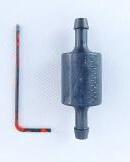
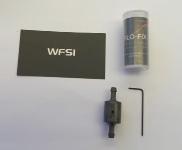
SASSDA Eastern Cape Golf Day scores big!
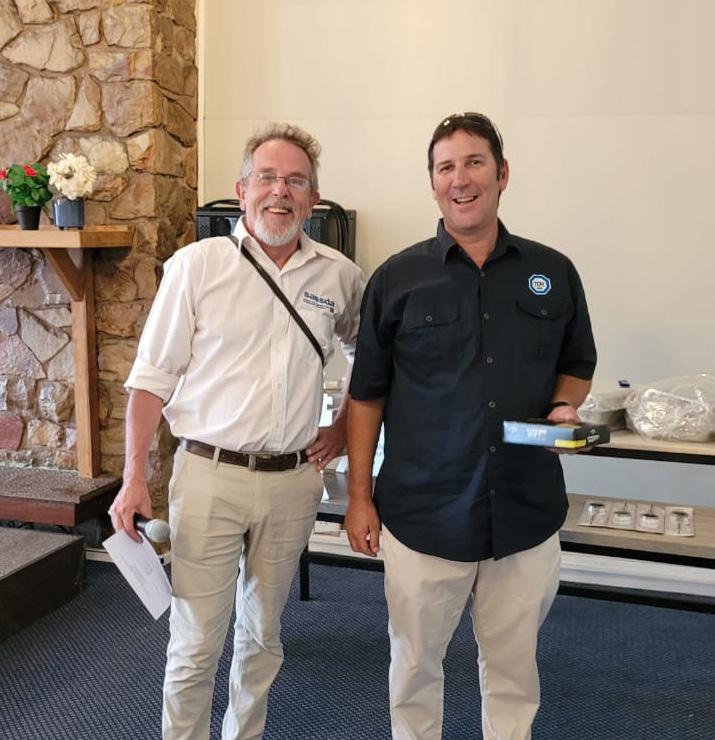
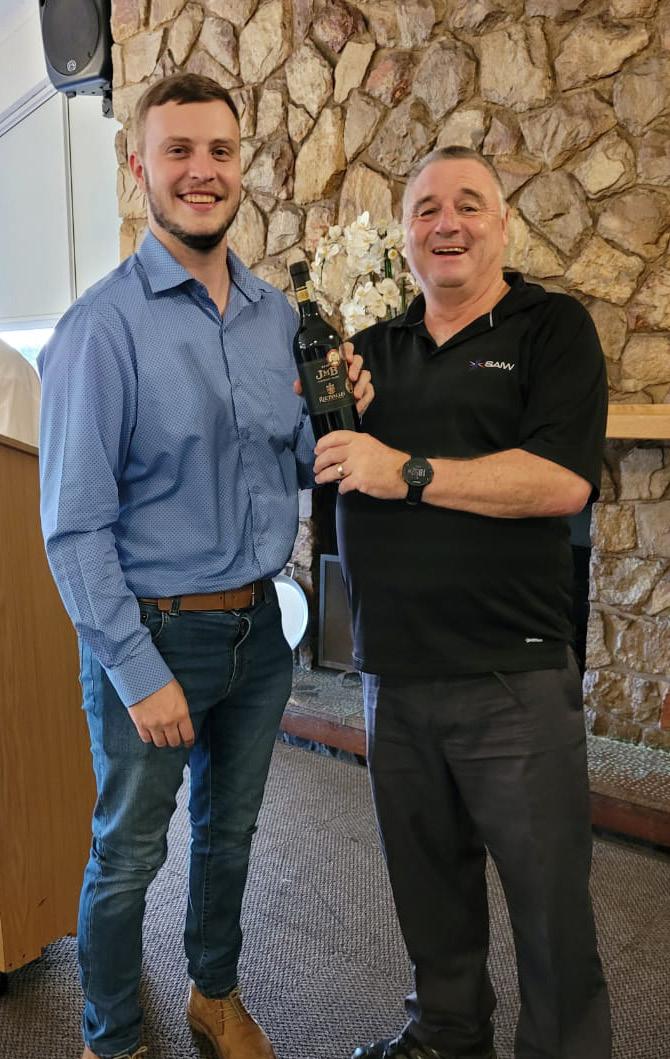
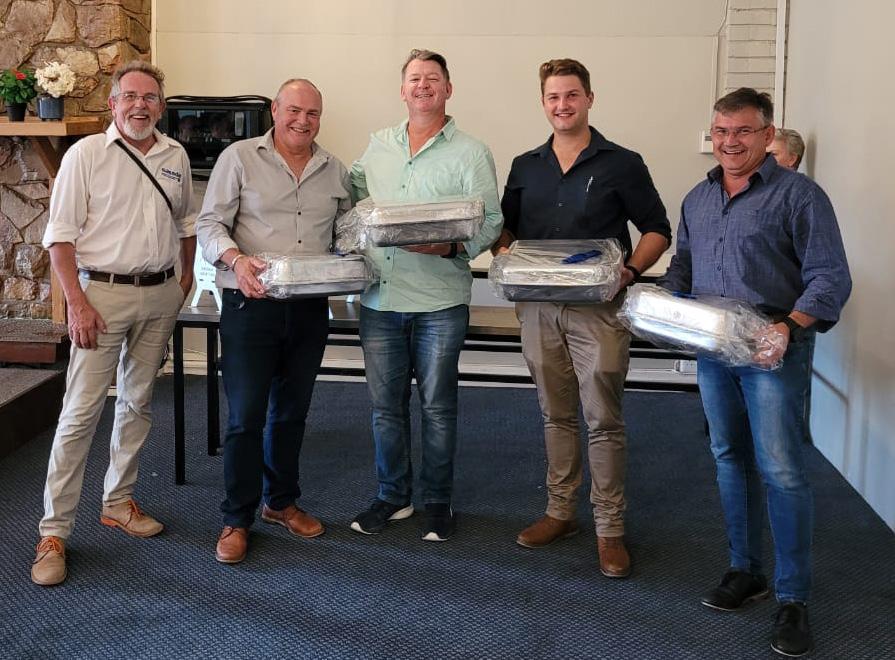

Sassda (together with the SAIW) recently hosted its Eastern Cape Golf Day at the spectacular Port Elizabeth Golf Club (The Hill) in Gqeberha.
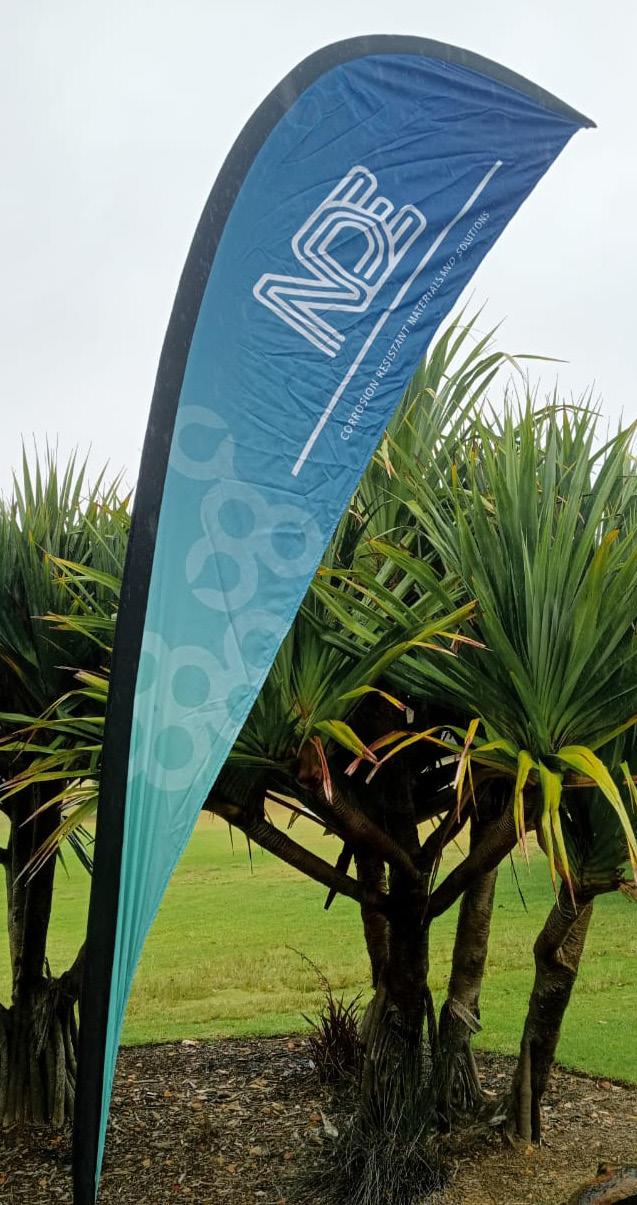


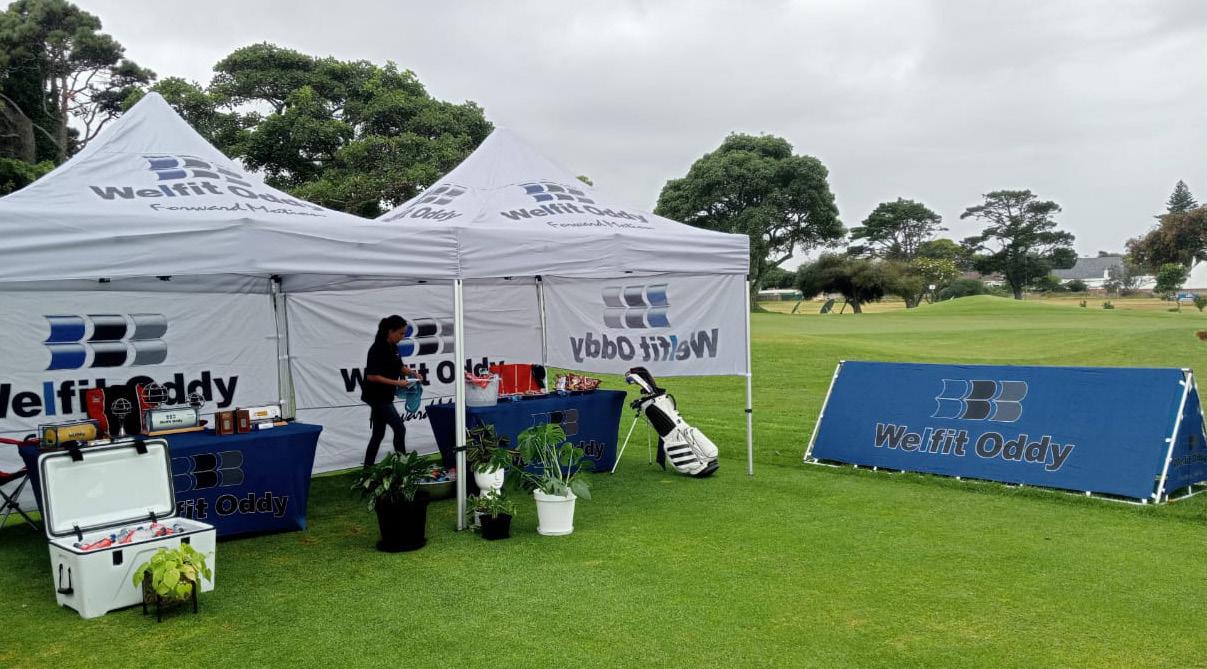
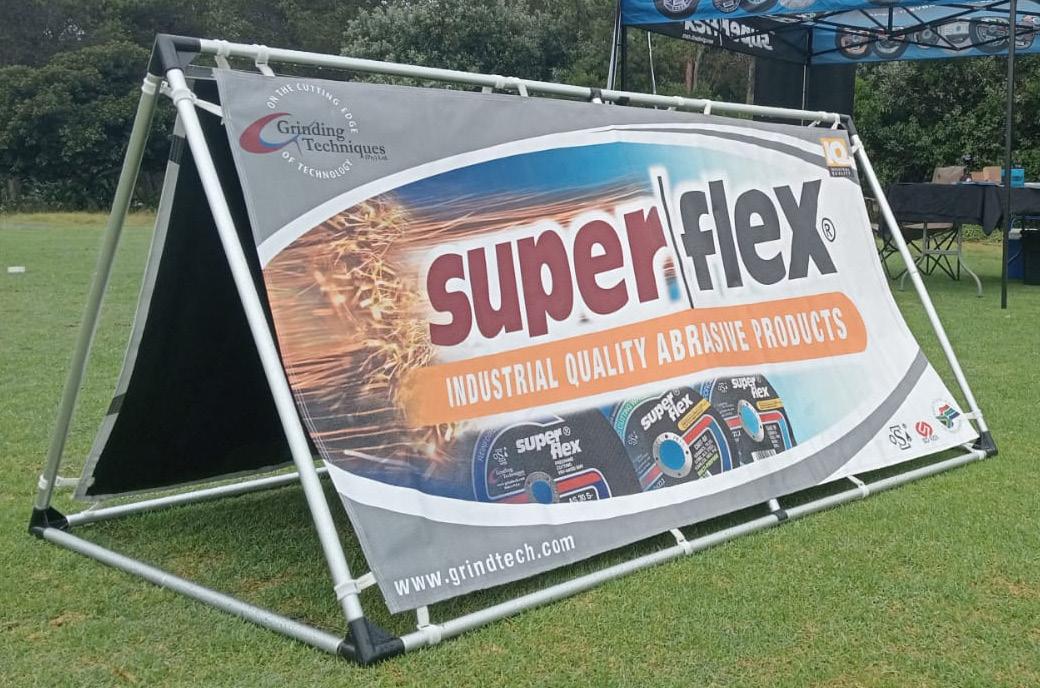
The popular event saw 40 golfers making their mark on the 18-hole course with 62 guests attending the exciting awards dinner in the evening.
Sassda would like to thank all the players for creating such an incredible atmosphere on the day and our loyal golf day sponsors who gave such key support towards this invaluable networking opportunity for our industry.
27 Issue 1 – 2023
sassda news
• Grinding Techniques NDE •
Welfit Oddy Columbus Stainless
Columbus Stainless Mill attracts record numbers
Against the backdrop of the COVID-19 pandemic preventing visits to the Columbus Stainless mill for more than two years, Sassda has recorded record attendance at the physical mill visits since their reinstatement last year.
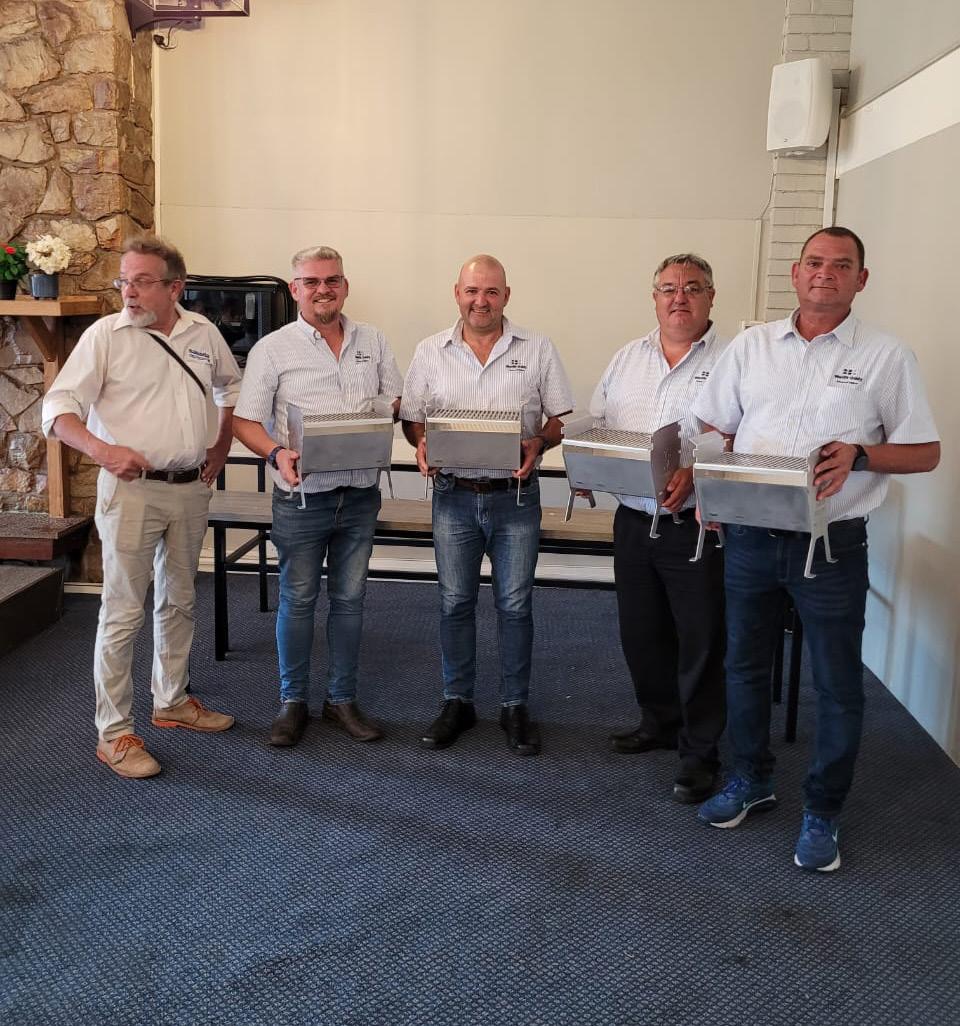

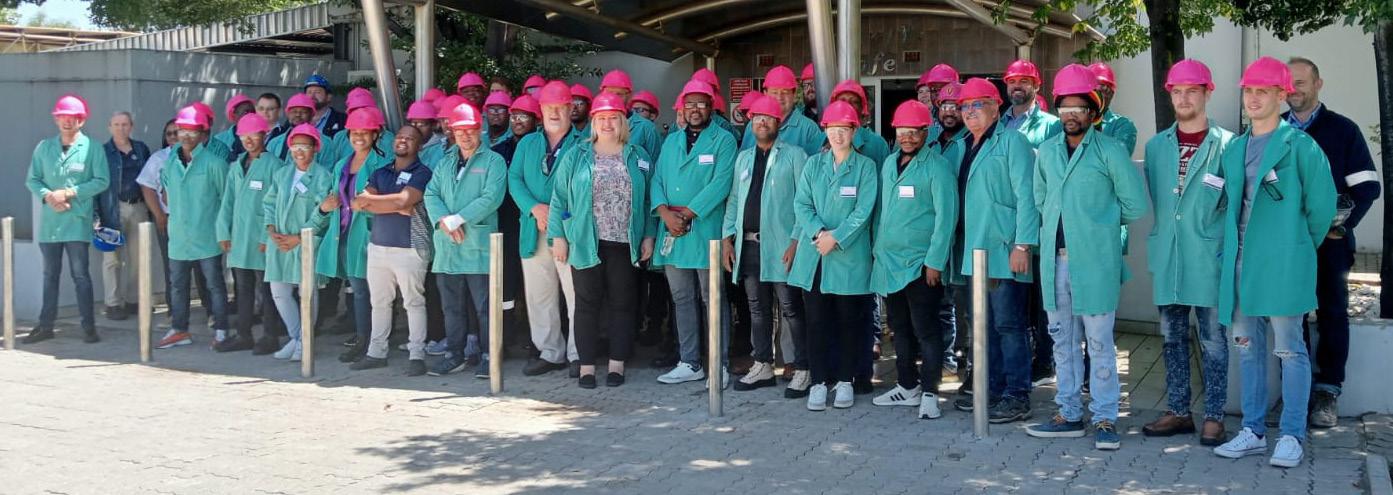
Attendees have made a point of saying how much they enjoyed the interaction with industry colleagues and the fascinating experience of learning and seeing exactly how stainless steel is made.
As such, we have received glowing feedback from the 122 delegates from the last two visits - in November 2022 and February 2023 - who were drawn from Sassda member companies, government departments and the dtic.
We’d like to thank our host Columbus Stainless as well as all the attendees, both of whom make these visits such a success!
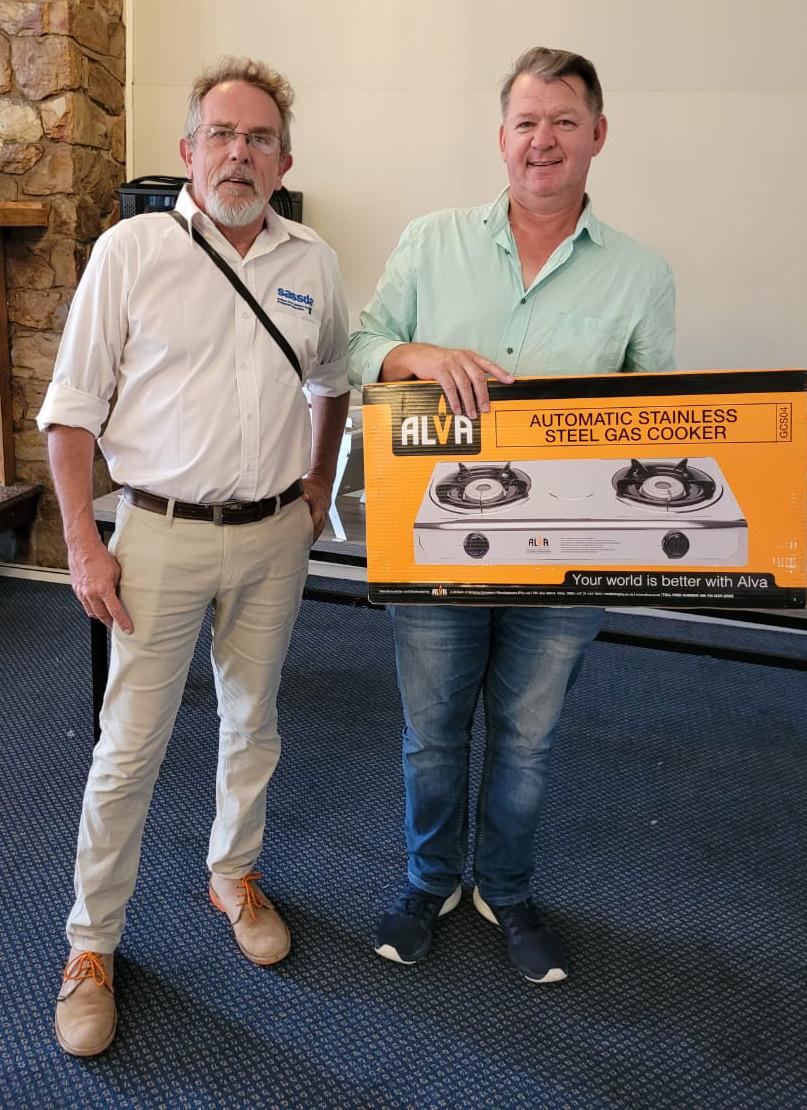
E-mail francis@sassda.co.za to find out when the next Sassda Columbus Stainless mill visit will take place.

Issue 1 – 2023 28



































































